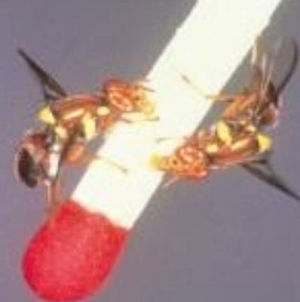ANOTHER Queesnland fruit fly has been found in Whangarei, near where a single fly was found in January.
The Ministry for Primary Industries (MPI) is investigating the new find of a single male fruit fly in a surveillance trap on Tuesday which was formally identified late yesterday.
MPI Deputy Director General Compliance and Response, Andrew Coleman, says the insect was trapped in the Parihaka area of Whangarei, about 400m from where a single fly was found in January this year.
"However all our information at this stage tells us this detection is a new find and not related to the January incident.
"Queensland fruit fly has been found four times in New Zealand previously, including the January Whangarei detection. In all these earlier cases, increased trapping found no further flies," Coleman says.
MPI has responded promptly and field teams are already working in the area setting additional traps to determine if other fruit flies are present and providing information to residents.
"As in January, it is vital we find out if the insect is a solitary find or if there is a wider population in Whangarei.
"This insect is an unwanted and notifiable organism that could have serious consequences for New Zealand's horticultural industry and home gardeners. It can damage a wide range of fruit and vegetables," Coleman says.
MPI is working closely with international trading partners and the horticultural industry to minimise the risk to New Zealand growers and exporters.
The Ministry is defining a controlled area around the location of the fruit fly detection and the movement of fruit and vegetables out of this area will be restricted. MPI will provide extensive information about this in the near future and will work closely with the local community.
"The Whangarei community were immensely supportive of our efforts earlier this year and we anticipate they will be again. It is, of course, disappointing that this situation has recurred."
Coleman says the most likely way that fruit fly can arrive in New Zealand is in fresh fruit and vegetables. "The Ministry is aware that fruit fly populations have dramatically increased in Australia in recent months and in light of the previous Whangarei find, we have been reviewing our importing requirements for fruit fly risk goods."
See www.biosecurity.govt.nz/pests/queensland-fruit-fly



















